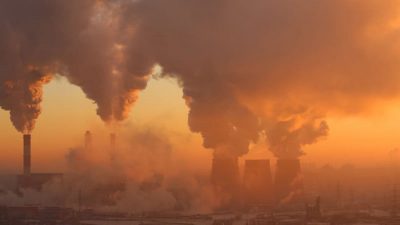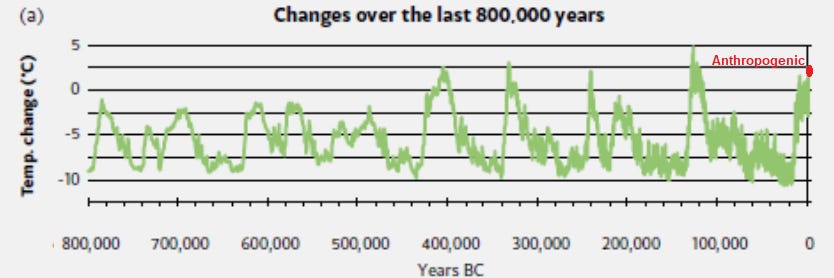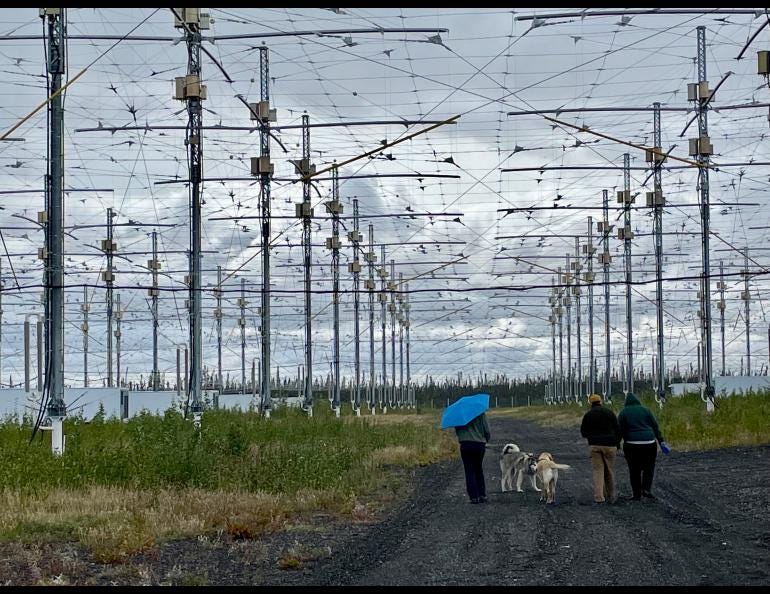Carbon Dioxide Is the Least of Our Worries
Yes, ecosystems are collapsing. No, it has nothing to do with CO2.

All Global Research articles can be read in 51 languages by activating the Translate Website button below the author’s name.
To receive Global Research’s Daily Newsletter (selected articles), click here.
Click the share button above to email/forward this article to your friends and colleagues. Follow us on Instagram and Twitter and subscribe to our Telegram Channel. Feel free to repost and share widely Global Research articles.
***
Last week, Nobel physicist John Clauser came out of the Clausit to speak his own inconvenient truth about global warming and CO2 . No good deed goes unpunished. Another physicist who was a personal hero of mine has expressed similar views. This is a big subject, and I don’t feel engaged enough with the issue to write a book, But I will say a few things about which I feel pretty certain, but to which Right Thinking People may take exception.
- Global ecosystems are indeed in crisis, and this is the result of human activity.
- But greenhouse gasses, CO2 and climate change are peripheral to this story. The net effect of CO2 emission is likely to be beneficial, if at all relevant.
- Environmental activism may be the most important movement on the planet today, and its diversion into a narrow focus on carbon is dangerous.
- Weather manipulation is a well-developed, sophisticated science being practiced on a global scale, without open scientific backing and without democratic consent. This, too, is a crime and a major danger.
1. Ecosystem Collapse
Elizabeth Kolbert’s book, The Sixth Extinction, is the best single guide to what is at stake.
Species are disappearing at a rate that has only been rivaled five previous times in the 4-billion-year history of life on earth.
These are seminal events, changing the face of the earth and the nature of life.
The most recent extinction (#5) was the disappearance of the dinosaurs, 65 million years ago.
We know just enough to realize that ecosystems are complex and interdependent in more ways than we can understand. Ecosystems are robust, and the loss or replacement of a few species triggers adaptations so that the ecosystem continues in a new equilibrium. But ecosystems can also collapse if a keystone species is lost, or if it is sufficiently disrupted.
Some large fraction of the species on earth is either extinct or rapidly disappearing. It is impossible to offer a more quantitative estimate because most of the macroscopic species have not yet even been catalogued, and of the microscopic species, including bacteria and fungi, our understanding has barely scratched the surface.
At some point, ecosystems collapse and species disappear because other species on which they depend are disappearing.
This is happening in large stretches of the world.
Ocean life is seeking a new equilibrium after the pollution, overfishing, and the killing spree of the last 50 years in particular.
Forests and wetlands the world over no longer support the diversity of life that they once harbored, and the collapse of biodiversity has a momentum that continues over decades.
The Center for Biological Diversity is a go-to source for information and my favorite environmental group.
Major reasons for this collapse include
- habitat loss
- deforestation
- every war is an environmental disaster
- widespread poisoning of insects, which are at the base of the animal food chain
- insects are also pollinators, and plant life becomes fragile when insects disappear
- draining of wetlands, mining of fossil water, and damming of rivers
- deliberate targeting of apex predators, including lions, wolves, and whales
- washing of topsoil into the rivers and oceans
- wasteful practices in mining, agriculture, and industry
- global travel, bringing invasive species that tend to homogenize ecosystems worldwide
Many people, consciously or otherwise, imagine a transhuman future in which the earth is paved over and food is grown hydroponically.
We’ll eat lab-grown meat and live in a virtual paradise, even after we kill the ecosphere.
This is a dangerous delusion! All life is interdependent.
No species can survive outside an ecosystem. Bacteria manufacture chemicals crucial for life. Insects pollinate. Fungi recycle waste, make atmospheric nitrogen biologically useful, and connect trees underground. No species can exist without a rich ecosystem, and we don’t begin to understand all the connections that create a functional ecosystem. Mankind’s one attempt to create an artificial ecosystem, dubbed Biosphere 2, fell flat on its face within weeks.
In murdering nature, we are destroying the foundation for human life as well.
2. Carbon Dioxide Has Little to Do with This

Anthropogenic global warming is a tiny fraction of the natural variations in earth’s temperature.
There are great natural cycles in the earth’s temperature. One of the best-documented is a cycle of about 100,000 years. The reasons are not well understood, but the present warm period in which human civilization has developed is not typical. Ice ages are typical.
As recently as 12,000 years ago, the part of Pennsylvania where I live was under a glacier two miles thick. When these conditions inevitably return, it will create a far greater disruption to animal life and to human activity than anthropogenic warming. “We’re overdue for the next ice age,” and it may be that “global warming” is helping to stave off that destiny, at least temporarily.
So, it’s true that we are at the warmest point in the last 100,000 years, but that has little to do with human activity. The 100,000 year cycle has a range of about 10o C, and human activity in the last 200 years is responsible for only about one 1o C.
Compared to local effects in America and Europe during the Little Ice Age of the 18th century, the effect of all our burning of fossil fuels is lost in the noise. Global warming is a worldwide average, while the Little Ice Age was regional; but the point is that even in the last few hundred years, ecosystems have had to adapt to much larger changes than those that global warming has imposed.
All the hype about a climate catastrophe based on carbon emissions is based on computer models that are woefully inadequate. These models have been wrong about the changes in the last 40 years since modeling began. They are no reliable guide to future climate response, though they are are continually being cited as authority.
In the last 7 years in particular, CO2 emissions have continued and accelerated, atmospheric concentration has increased steadily, but temperatures have gone up and down.
Freeman Dyson makes the point that plants grow faster when there is more CO2 in the air, and when temperatures are warmer. Plants are the productive basis for all ecosystems, so ecosystems are enriched by higher CO2 levels. John Clauser makes the point that there is no evidence that a pattern of extreme weather events can be related to more CO2 in the air.
3. The Environmental Movement Has Been Derailed by the Carbon Narrative
Many people of good will are passionate about reducing their CO2 footprint. Many companies and organizations are profiting from scaring the public about climate change and selling solutions to enrich themselves such as carbon credits, or pushing nuclear power as a friendlier form of energy than burning wood, coal or petroleum products. (It is not.)
Government policies regarding energy could certainly be improved. The most effective thing we can do is to adopt technologies that use energy much more efficiently than we now do.
Cars that get 200 miles per gallon of gasoline already exist, and public transit can be much more efficient. Buildings can be designed so that they remain comfortable with much less energy input. Rocky Mountain Institute has been creatively documenting the necessarily policy changes for decades.
There is an urgent need for all of us to get back to advocating the diverse policy changes that are required to preserve and restore ecosystems, to slow and mitigate the Sixth Extinction.
Reducing carbon emissions is dauntingly difficult, both technically and politically. Technically, because so much of what we do depends on fossil fuel energy, politically because the economic benefits of burning fossil fuels accrue locally, while the costs, if any, are spread across the globe.
Burning oil is associated with spills that devastate ocean life for decades; burning coal is associated with mountaintop removal; fracking causes earthquakes and pollutes groundwater. Cars cause smog and coal-burning power plants put mercury in the air. I’m not saying that fossil fuels are environmentally benign or that our dependence on carbon-based fuels is sustainable; only that atmospheric carbon dioxide is not the locus of the principal harms.
When vast machines capture carbon dioxide from smokestacks and pipe it thousands of miles to be pumped into the ground, I suspect something is seriously amiss. When companies get environmental brownie points for cutting down forests for woodchips and replanting seedlings, environmentalism has gone mad.
Focus on carbon emissions is the least effective kind of environmental advocacy, and it is probably counter-productive.
4. Weather Manipulation Is Everywhere, and It’s Unacknowledged
Chemtrails are real, though the motivation for this vast, multi-billion dollar project is unclear.
My best guess is that HAARP and similar large antennas are being used to push air masses around the globe with electrostatics and stratospheric heating, and that seeding the stratosphere with aluminum is part of a coordinated effort to send that radio energy to desired locations.

Dane Wigington has done more than anyone to document this. He has an encyclopedic knowledge of the phenomena, but I don’t believe he understands the motivation for weather manipulation. This is his introductory video.
Droughts and cold snaps are being weaponized to reduce agriculture output. Hurricanes are being steered toward inhabited areas.
It may be that weather manipulation could be applied in a productive and broadly beneficial program, but evidence is that the opposite is being pursued.
I believe that the long drought in California, floods in Texas, and the recent transport of smoke from Quebec to blanket the densely populated Eastern US are all examples of weather manipulation. I believe that these engineered weather anomalies are being put forward as evidence that CO2 is deranging the weather. I realize that it is difficult to prove that any particular weather anomaly is engineered, but Wigington’s evidence convinces me.
There is no doubt that the technology of weather manipulation has been maturing for many decades, and present capabilities are unacknowledged. Who is manipulating the weather and what is motivating them? I think these are important, open questions.
The Bottom Line
Please redouble your advocacy for environmental protection in all its forms. Please educate yourself about chemtrails and geoengineering. And don’t worry about CO2.
*
Note to readers: Please click the share button above. Follow us on Instagram and Twitter and subscribe to our Telegram Channel. Feel free to repost and share widely Global Research articles.
This article was originally published on the author’s substack, Unauthorized Science.
All images in this article are from the author

